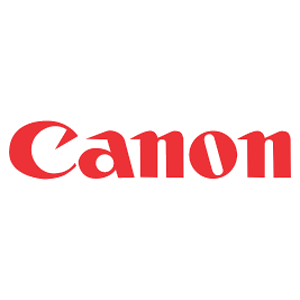"These types of marketing tactics will not and should not be tolerated," vowed Boston Mayor Thomas Menino after the now-infamous blinking LED ads for the Cartoon Network's Aqua Teen Hunger Force were discovered on bridges and underpasses, leading to a bomb scare that shut down parts of the city.
But the mayhem in Boston last month did more than raise questions about that city's police. It also put a spotlight on the challenges facing advertisers in an age when consumers are more likely than ever to ignore – or fast-forward through – traditional ads. TV, magazine and newspaper buys still dominate ad spending overall, but their growth is slowing. The days when an advertising agency could come up with an idea, produce three TV spots and call it a campaign are likely gone forever, says Neal Burns, a professor in the University of Texas at Austin's Department of Advertising.
Ilya Vedrashko, an emerging media strategist at Boston ad agency Hill Holliday whose MIT thesis examined advertising in video games, agrees. "A lot of stuff still works," he says of traditional advertising. "But it needs to be part of a bigger package."
Fortunately for panic-prone police, most of the innovations take advantage of technology already in consumers' pockets, and don't involve blinking lights.
"Mobile will play an increasingly important role," says Wayne Ruttle, vice president of sales for Adflow Networks, a company that develops digital signage and interactive kiosks. "While consumers can already send a text message to a number listed on a billboard and have information or coupons sent to them, mobile offers lots of other possibilities."
One of these is QR codes, multidimensional bar codes that are already being used in Japanese advertising, thanks to code-reading software embedded in camera phones there. "Consumers in Japan read ads, then snap a photo of a code at the bottom of the page to get all kinds of additional information," says Vedrashko. "It's very cool."
University of Texas' Burns adds that GPS-enabled mobile phones in Europe are already creating new advertising opportunities. "I was standing in a tiny Italian village and my cell phone showed that there was a restaurant two blocks away," he says. "This form of advertising can be very persuasive."
Vedrashko believes the integration of advertising into mapping technologies like Google Earth will also become increasingly common, pointing to a recent collaboration between Google and automaker Saturn as one early example. In that campaign, clicking a Saturn banner ad launched a special Google Earth application that zoomed down to the nearest dealership before rolling a heartwarming sales pitch from that dealership's manager.
Vedrashko envisions a future where consumers using services like Google Earth or Microsoft's MSN Virtual Earth are treated to an endless vista of corporate logos painted on roofs. "Businesses located near airports have been doing it for years," he says. "What company wouldn't want their brand image in a satellite snapshot?" A company called Barn Painting & Advertising recently announced that it had located 10 barn owners in Pennsylvania's York and Adams counties who were willing to make their roofs available to advertisers.
Lest you think you can dodge the next generation of advertising by switching off your PC and leaving your mobile at home, tech-savvy advertisers are findings ways of beaming their messages directly to your skull.
Hypersonic sound (.pdf), or HSS, is one such technology, and is increasingly embraced by advertisers. Unlike conventional audio speakers, which shoot sound waves in all directions, HSS transmits tightly focused directional sound beams that can only be heard by those standing directly in their path, an effect that some compare to hearing voices in their heads.
Adflow's Ruttle says his company uses HSS transmitters in the signage it designed and installed for OfficeMax, to the benefit of both consumers and employees. He says that the signs, which promote the chain's copy and print services, can be seen throughout the store, but are heard only by those customers waiting in the print services area. "It allows OfficeMax to reach the right customers without driving everyone else in the store crazy."
Google and Microsoft are reportedly developing high-tech billboards that can change ads in an instant and identify, using facial recognition, the gender of a passing driver. Vedrashko says that means more campaigns similar to last year's from Mini Cooper, where drivers equipped with special key fobs were treated to personalized messages like, "Hi Kate, nice day for your convertible" when driving by certain billboards. (However, recent efforts by some cities to ban distracting billboards may limit this type of advertising.)
And, of course, there's no shortage of tech gimmicks and stunt-vertising like the Cartoon Network's Boston blinkies. Last year, Maxim constructed a giant version of its magazine cover (featuring Eva Longoria) in the desert outside Las Vegas; the result was large enough to be seen by orbiting satellites. Last month, Gulfstream sent one of its planes on an eight-hour, 10-state flight that mapped the company's logo on web-based tracking applications.
But it is quieter technologies that are fundamentally changing the way ads are produced and consumed. Vedrashko points to the "widgetization" of advertising as one such development. "Companies used to place an ad on a website, then wait for traffic to come," he says. "Today, ads are moveable and pluggable so that people can put them on their blog or post them to YouTube. The consumer becomes part of the promotion mechanism."
Burns agrees, and adds that technology has brought new metrics and measurability to advertising. "Pay-per-click means that you know exactly what kind of activity your ad is generating," he says. "For agencies, it represents an entirely different level of accountability." Vedrashko says a plan by TV-ratings provider Nielsen Media to begin measuring viewership of commercials will add another layer of accountability.
If one thing is clear, it's that no one really knows exactly what advertising will look like in 50 or even 20 years. "Part of my job is to study this stuff," says Vedrashko, "but it sometimes creates as many questions as it answers." As if to prove his point, he starts wondering aloud what might happen to advertising when smart robots begin handling mundane household tasks. "When robots start cleaning our homes, it's not unrealistic to assume they'll also be purchasing cleaning products," he says.
"And then we'll need to ask the question: How do you advertise to a robot?"





